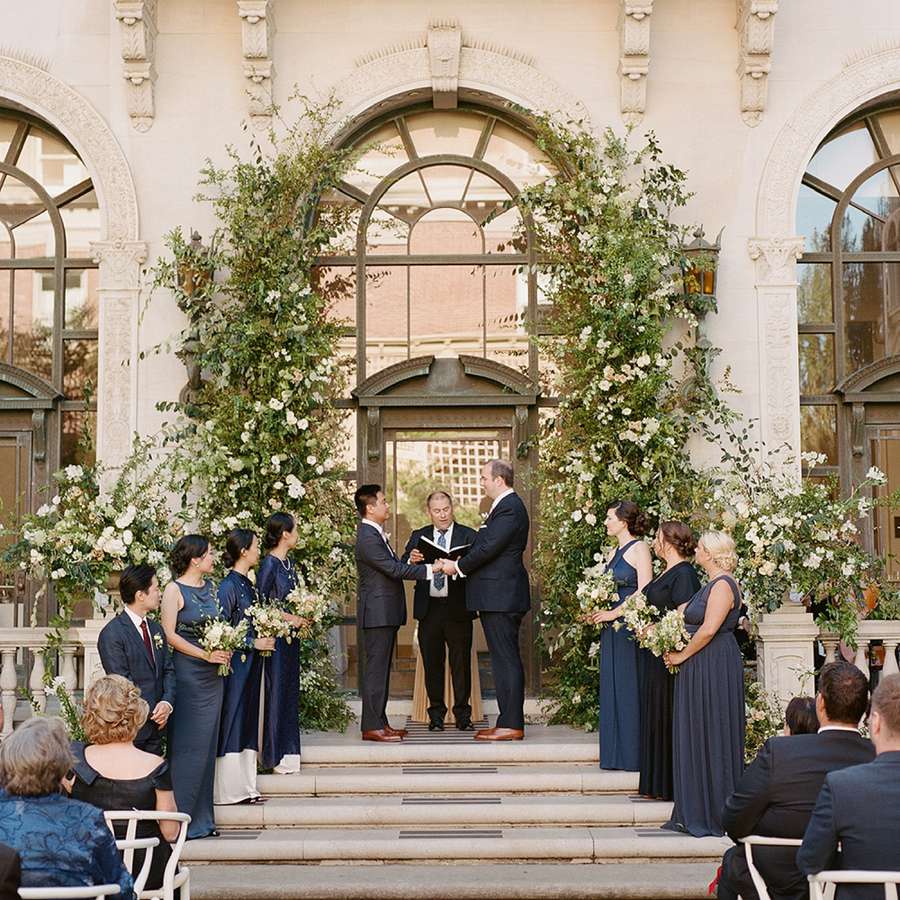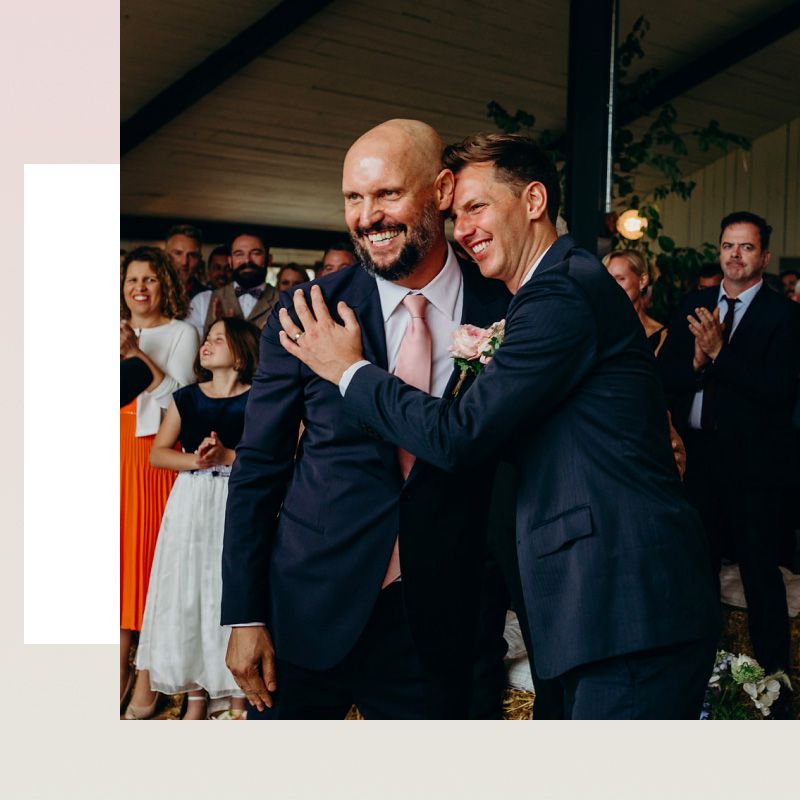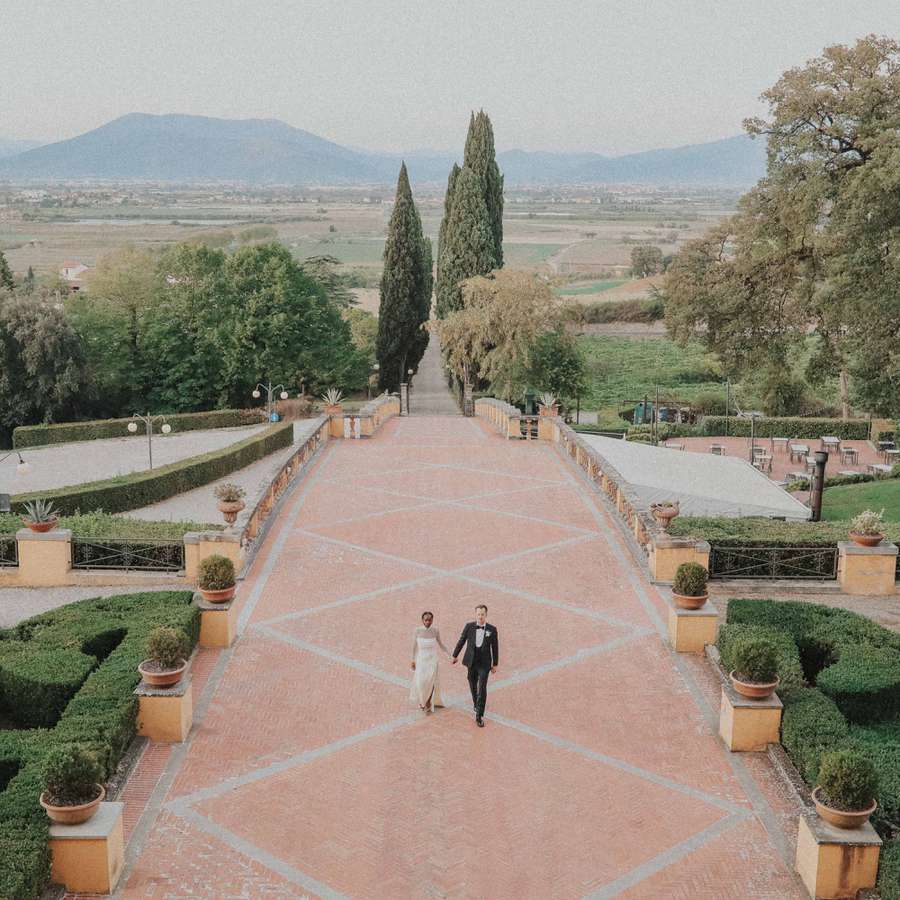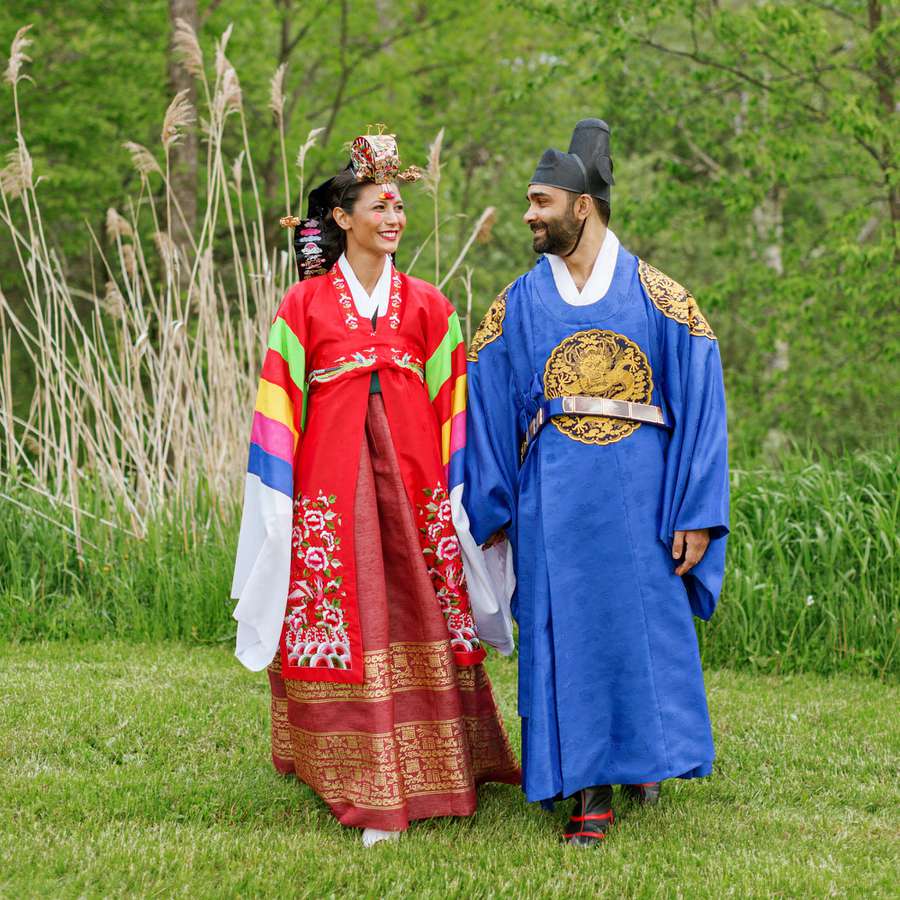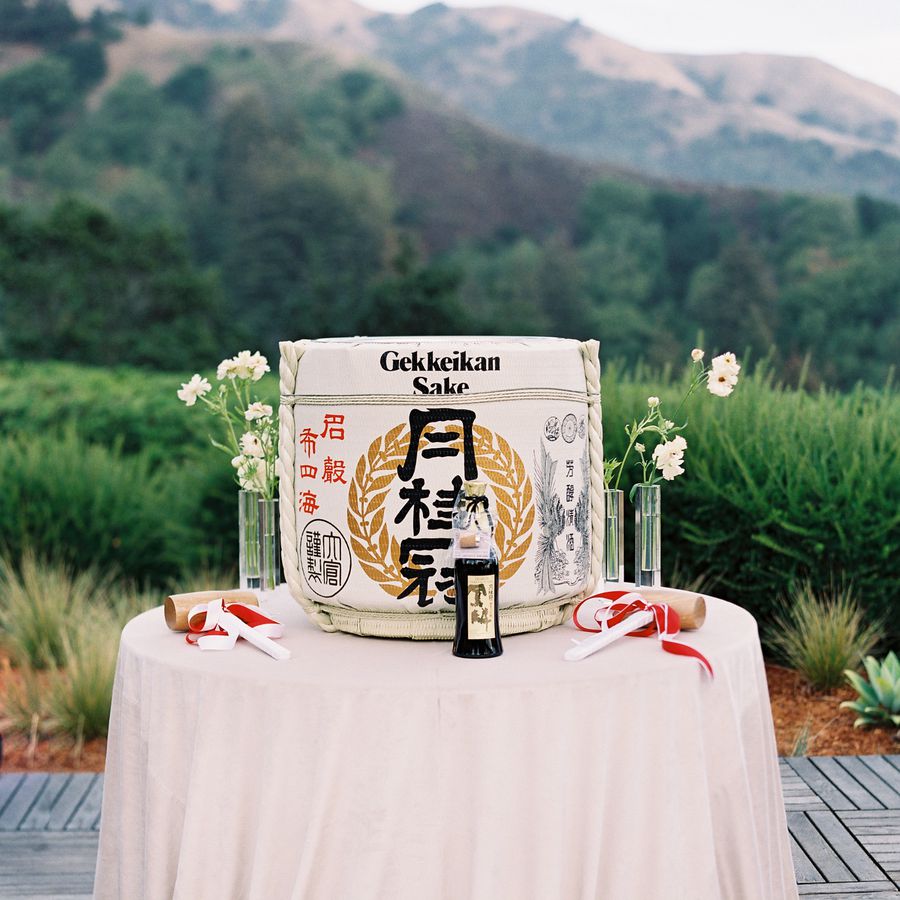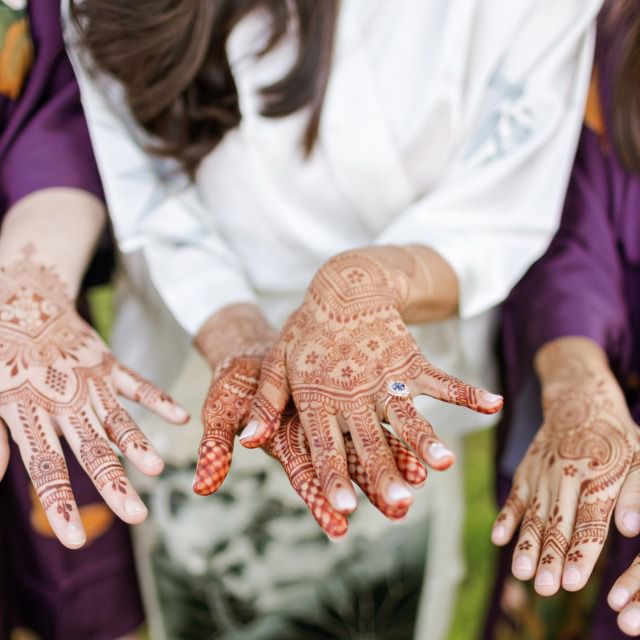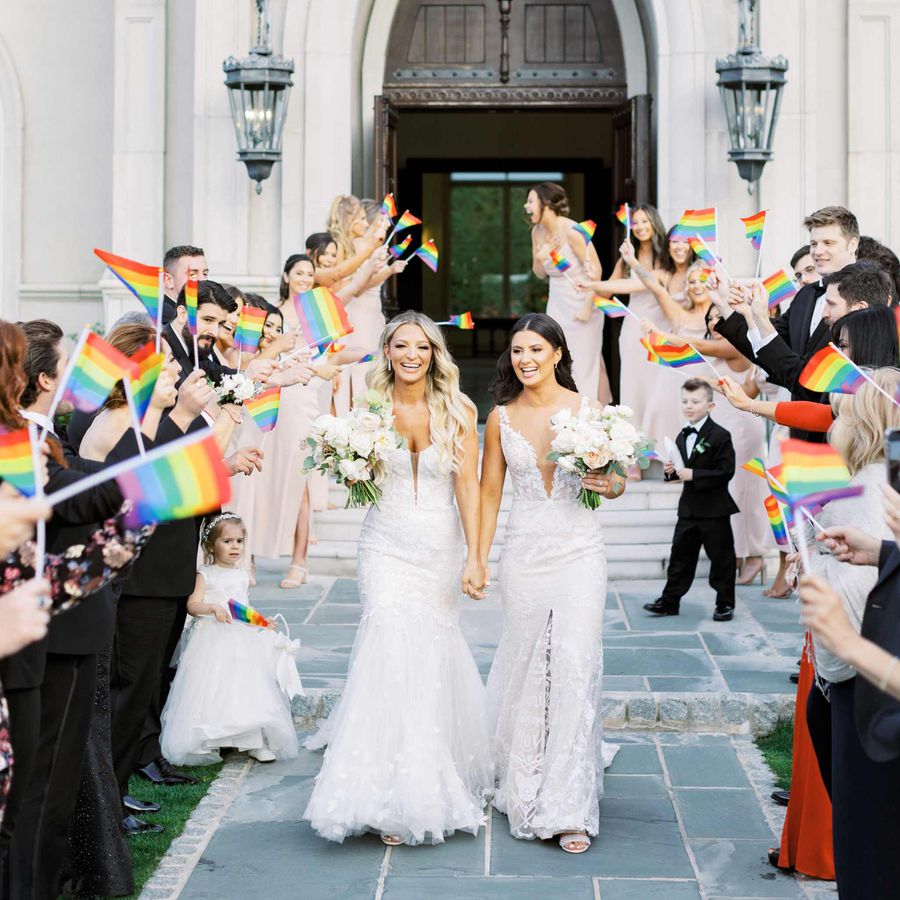:max_bytes(150000):strip_icc()/sq-0220bbf12c2646e18409c941378b2baf.jpg)
PHOTO BY ERIC KELLEY
If you or your partner follow the Christian faith, you're likely planning a traditional Christian wedding ceremony. However, with six branches worldwide that are ultimately divided into dozens of denominations in the United States alone, there's a great deal of variety in the wedding ceremony traditions practiced in different Christian houses of worship. That being said, several common threads exist. Knowing what traditions you might choose to include in your vow exchange (and gaining a deeper understanding of the meaning behind said traditions) will help deepen your appreciation of the experience.
“I’m new old-school,” says The Reverend Roxanne Birchfield, MDiv (Rev. Roxy), a non-denominational Christian minister who officiates weddings across the country through her company, Married by Rev. Roxy ®. “I believe God gives us the gift of choice.” That means that she’ll add to, subtract from, and adjust Christian wedding ceremony traditions according to what makes sense for her couples, and she empowers others planning Christian wedding ceremonies to do the same.
Meet the Expert
Rev. Roxy received her Masters of Divinity from Nyack College’s Alliance Theological Seminary. In 2014, she was ordained and accessioned as a Battalion Chaplain in the U.S. Army Reserves. Her non-denominational Christian marriage ministry, Married by Rev. Roxy ®, is based in New York City and Pennsylvania but serves couples worldwide. Rev. Roxy has officiated weddings on several TV shows, including Married at First Sight, Love & Hip Hop, and Love Is Blind.
To help you do just that, Rev. Roxy shares the most common Christian wedding ceremony traditions, which, as a whole, is called the “Order of Service." They proceed in the following order.
Processional
:max_bytes(150000):strip_icc()/processional-fd38fa68d3c841c595271ec1aede402d.jpg)
PHOTO BY CATHERINE RHODES
The processional is the time in a Christian wedding ceremony when all of the necessary parties make their way to the altar. Per Rev. Roxy, the minister enters first. In a heterosexual couple, the groom is typically next. He enters on his own, or may choose to escort a parent or family member down the aisle. Next comes the groomsmen, followed by parents and grandparents of the couple, the bridesmaids, the ring bearer and flower girl, and finally, the bride. Traditionally, she is escorted by her father, but many today opt to be escorted by both parents, or the parent figure(s) they are closest to.
Presentation
:max_bytes(150000):strip_icc()/dad-14ffdde170b04678b1f16b762c037f35.jpg)
PHOTO BY MERARI PHOTOGRAPHY
In a heterosexual couple, this is the “giving away” of the bride by her parents or parent figures to her groom before she steps on the altar. “It used to symbolize that the bride is a gift to the groom, but times have changed,” says Rev. Roxy. “It’s now more a sentimental symbol [for the parents] of their child becoming one with someone else.”
Moment of Silence
:max_bytes(150000):strip_icc()/silence-04fa4da788b64eac81cae81a0426597b.jpg)
PHOTO BY IMOGEN XIANA
A moment of pause to remember deceased loved ones is common at religious weddings of many faiths. The minister will say the names of those who have passed at the top of the ceremony to welcome their presence into the space.
Homily
:max_bytes(150000):strip_icc()/kaitchris-0405-6a089de019fa44ee9d55f4082a91ab11.jpg)
PHOTO BY ANDRE MAIER
Also called the “sermon” or “ceremony message,” this is the portion of a Christian wedding ceremony that is tailored to the couple specifically. The minister offers insights into their relationship and anecdotes of their path to marriage, and will also share and discuss Bible scripture that is applicable to their story. 1 Corinthians 13, which begins with “Love is patient, love is kind …” is one of the most popular scripture readings in Christian wedding ceremonies.
Prayer
:max_bytes(150000):strip_icc()/ceremony-3b8c107d95e1424ab9ed28ecf686ceec.jpeg)
PHOTO BY MELISSA OHOLENDT PHOTOGRAPHY
After the homily, it is common for the minister to offer words of blessing for the couple. The minister may ask guests to participate in a symbolic “laying of the hands” gesture, in which guests (while remaining seated) will bow their heads in prayer and stretch a hand forward towards a couple. This is done to confer and symbolically support the couple in the time of prayer.
Exchanging of Vows
:max_bytes(150000):strip_icc()/vows-f94fa7715d3d45809594190654cf6747.jpg)
PHOTO BY ATMOSPHERE FOTOGRAFIA
The most sacred part of the wedding ceremony, the exchanging of vows is when the couple makes mutual promises to one another to uphold the sanctity of their marriage. The minister leads the couple in these vows. The minister will either ask each member of the couple to repeat lines after them, or they will ask each person to respond with “I do” after they (the minister) completes a reading of vows.
Couples may choose to follow this with personalized vows, in which they make more specific promises to each other beyond the traditional ones offered by their officiant. Personalized vows can also be followed with “community vows,” in which the minister asks guests to pledge to support the couple in their upholding of these vows. The minister will ask guests to communally respond with “we do” after the reading of community vows.
“This replaces the objection—the ‘is anyone against this?’ bit,” says Rev. Roxy, who notes that the community vows tradition is becoming more common in both Christian and secular wedding ceremonies.
Unity Ceremony
:max_bytes(150000):strip_icc()/IMG_4130-15cd2a5c1d8944218f72a2724016dc4d.jpg)
Photo by KT Sura Photography
The unity ceremony symbolizes the two members of a couple—and also the two families and communities of a couple—joining together as one. It typically occurs after the exchanging of the vows, but the order can vary based on what feels right for the flow of the ceremony. A common unity ceremony is the lighting of a unity candle. A representative from each side of the couple (often their mothers) each lights a family candle to represent their side. The couple then uses their respective family candles to light a new flame together.
Other faith-based unity ceremonies include:
- Handfasting: In this unity ceremony, cords or strips of fabric are wrapped around a couples’ joined hands in a literal tying of the knot. Handfasting began as a secular Celtic tradition but is increasingly being adapted for Christian ceremonies.
- “God’s Knot” or “Cord of Three Strands:” In this unity ceremony based on Bible scripture Ecclesiastes 4:12, one member of the couple (traditionally the groom in heterosexual couples) holds a ring with three strings—one to represent the bride, one to represent the groom, and one to represent God—attached to it. The other half of the couple braids the strands together to symbolize their relationship, and God’s position at the center of it.
- The washing of feet: This ceremony is based on Biblical scripture John 13:2-5, in which Jesus demonstrates his devotion to his disciples and the humility necessary to serve by washing their feet. In this tradition, each member of the couple sits as the other removes their shoes and washes their feet from a small basin. Some consider it more of an extension of the vows than a unity ceremony.
Exchanging of Rings
:max_bytes(150000):strip_icc()/rings-86e8a9a38b434db38ae52c86ba6362ed.jpeg)
PHOTO BY GIANLUCA & MARY ADOVASIO
After exchanging vows, each member of the couple will put a wedding ring on the left ring finger of their spouse-to-be. This is often accompanied by additional vows or verbiage from the couple confirming the symbolism of the circular, never-ending shape of those rings. “The love in marriage should have an unendingness to it, just like a ring,” says Rev. Roxy. “We exchange them because it’s something we can put on the body that represents that type of love.”
Pronouncement
:max_bytes(150000):strip_icc()/00961-HilaryJeremyCartagena-c951131564ca495184f5324505b074cb.jpg)
PHOTO BY ERICH MCVEY
The pronouncement is the conclusion of the wedding ceremony, in which the minister declares the couple officially married in the eyes of the church. Rev. Roxy prefers to pronounce the couple and then direct them to kiss, but the opposite order (kiss, then pronouncement) is equally accepted.
Recessional
:max_bytes(150000):strip_icc()/0726_180109_ek_008-3efc60c45b6941da819a00dab0ffb27d.jpg)
PHOTO BY ERIC KELLEY
The couple comes back down the aisle and exits the house of worship officially married. The couple is immediately followed down the aisle by their ring bearers and flower girls, then their wedding party, then parents and important family members, and, finally, the minister. “Having the minister as first in and very last out marks the beginning and end of the ceremony,” says Rev. Roxy.
